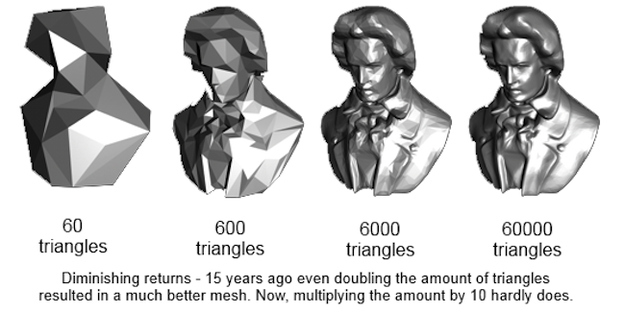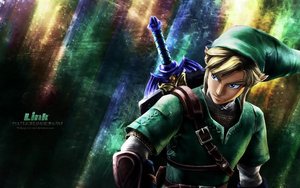Why the Wii U Might be Getting more 3rd Party Support than you Think
Our first community opinion piece is here. Ricard Julianti, will now be penning articles for Playeressence every now and then. Check out Ricard’s first piece here! It’s really good, a must read to be honest.
Hey everyone, Ricard Julianti here. You may have seen me posting on the site in recent months, providing my own thoughts on the topics provided. So when Furious Francis asked if I would be interested in writing some opinion articles for PlayerEssence, I jumped at the opportunity.
I try to stay well-informed on all aspects of the industry, soaking up news on any of the “Big 3” and their dealings. I probably have the strongest opinions on Nintendo at the moment and most of my articles will reflect that; but once more information is released about what Sony and Microsoft are doing, I’m sure I’ll have thoughts I’d like to share as well. I’m pretty excited to be working with Furious Francis to provide news and facts about the industry and hopefully, I am well received.
If you aren’t a fan of lengthy articles, these might not be for you but I hope you give them a shot regardless. Anyway, on with the show…
Ever since Sony released some details on the PS4 and its specs, people have been wondering, “Will the Wii U even be able to run multiplatform games, or will we have another Wii on our hands?” It is certainly a valid question and one that begs asking.
To start, we have to realize that Nintendo isn’t planning on making a 7-10 year console, that just isn’t what they do. Their hand was forced a bit with the Wii due to technology, what they wanted to accomplish with the Wii U probably wasn’t quite “there” back in 2011. My guess is that streaming to the second screen with very little delay was giving them troubles and there is no way it would have worked as well as it does now. The Wii U is likely going to be a 5-7 year console and I don’t see that as a bad thing. By the time third-party developers really start to utilize the power in the PS4 past the point of what the Wii U can do, it will be on its way out. Also, long life-cycles lead to more sequels and bored gamers. Just look at Dead Space 3, plenty of hype behind it yet gamers just didn’t really seem to care anymore and it hasn’t met sales expectations.
Over time, diminishing returns on graphics will force developers to come up with something new to innovate other than making games as photorealistic as possible. As this picture shows, rendering more polygons doesn’t really have the same effect as it used to.

Sure you can probably tell the difference between the last two images, but a different art style or clever texturing can make that difference negligible. If you sit just a couple of feet further from the image, you will hardly be able to see the details you could up close which brings me to my next point. The human eye has a hard time distinguishing between 1080p and 720p.
If you have perfect eyesight and have a 50” tv, the full benefit of 1080p is noticeable if you are sitting 6-7.5 feet away. Any farther and it starts to become less and less apparent. The smaller the screen size, the closer you have to sit in order to tell the difference as this chart shows: http://s3.carltonbale.com/resolution_chart.html

The average person has their tv 5 or more feet away from the couch they sit at unless their screen is quite small, not to mention the amount of people who don’t have perfect eyesight to begin with. Nintendo knows this which is why they are aiming for 720p at 60fps.
Native 1080p also creates an issue for developer budgets. The higher resolution artwork takes more power to render and more time to write the code properly so problems don’t arise. These things lead to a higher budget, even before you add in marketing. Of course companies are going to try to promote their games, leading to an even bigger budget. Western developers have been struggling for the better part of a year (or longer) with high budget games. They pour all of this money into a beautiful game, promote it like crazy and when the game ends up failing to meet expectations, the studio might be forced to close because they don’t have any money left.
It isn’t just Western studios either, pretty much any studio that tries to appeal to “Western” audiences by being bombastic and visually stunning has problems moving units. Square Enix in particular has been hit hard by this. It isn’t a sustainable strategy and with development costs increasing 10% or more for the next generation, we will see even more studios shut down if things don’t change.
So what does all of this mean for the Wii U? As developers see that putting out increasingly high budget games doesn’t turn a profit, they will try to scale things back a little to try to stay alive. With the way photorealism makes a budget balloon, smaller third parties won’t be able to afford to compete visually and will likely opt for either a different art style or a lower resolution at a higher frame rate as well. Games with different art styles other than “photorealistic” could even take over as the market leaders rather than “Realistic War Shooter 18”.
Next-gen engines are extremely scalable, with the ability to be used on everything from the most expensive gaming PC you can put together to smartphones and tablets. Even the AI is scalable in games, so while enemies on the Wii U might be “dumber” than those on the PS4, they will still be more advanced than what we currently have. The visual disparity between games on the Wii U versus the PS4 will be much like the difference between a PC game running on “Very high/Ultra” vs “Medium” and maybe even “High” settings. Lower resolution and less “frill effects” such as the number of particles, shadows, and reflections, but at a higher framerate (if the developer optimizes correctly) plus the unique gameplay elements the Gamepad brings to the table.
Look at these images comparing the different settings in Crysis 3.
http://www.gamereactor.eu/media/26/crysis3minimista_702601b.jpg http://www.gamereactor.eu/media/26/crysis3minimista_702611b.jpgCompared to “Very High”, does “Medium” have less in the way of draw distance, lighting/shadows and general resolution? Sure, but is the game virtually unplayable? No. You could even argue that the “Low” setting is still a gorgeous game that you would be willing to play if your PC wasn’t able to do more.
When it comes down to it, even if you own more than one next-gen system, you likely won’t double dip on any games. If you only see one version of the game running, you will never even know what the others are doing so why does it really matter if one has more particle effects and better reflections? You enjoy the game because it is fun to play, not because it has twice as many particles on the screen at once.
Nintendo already has more developers on board than developers that are not supporting the Wii U. Crytek, Capcom, Ubisoft, TT Games, WB, Square Enix, Criterion, Atlus, Namco Bandai, Sega, Platinum and Indie devs popping up left and right; versus EA (minus Criterion), Deep Silver, Epic (UE3 support only), and CD Projekt RED.
We won’t really know what is and is not coming to the Wii U from third parties until E3 is said and done. Nintendo will come out swinging, showing off just what the Wii U can do, and it will impress, that much is for sure. Once people start to realize there is more to the system, third parties will support it more and more. They would be foolish to ignore a system with a larger install base than the PS4/720 combined.
More From Playeressence


 Call of Duty Black Ops PlayStation Vita Needs Buy Wii U, Get Previous
Troll Needs New Marketing Owners eShop Games?
Call of Duty Black Ops PlayStation Vita Needs Buy Wii U, Get Previous
Troll Needs New Marketing Owners eShop Games?
 Playeressence Original Next Generation News All the Top Gaming News
Content & Shows Central, All info here For the day here
Playeressence Original Next Generation News All the Top Gaming News
Content & Shows Central, All info here For the day here
-
Sleepyhun
-
Sid
-
RicardJulianti
-
-
598gh
-
donzaloog
-
Ogya
-
Troy
-
venomjamaica
-
jesgrad07
-
Alex
-
RicardJulianti
-
-
-
sergio111293
-
Silver
-
RicardJulianti
-
-
ck1x
-
ei8bit
-
RicardJulianti
-
-
Ryan
-
AaronB
-
corniliuss






